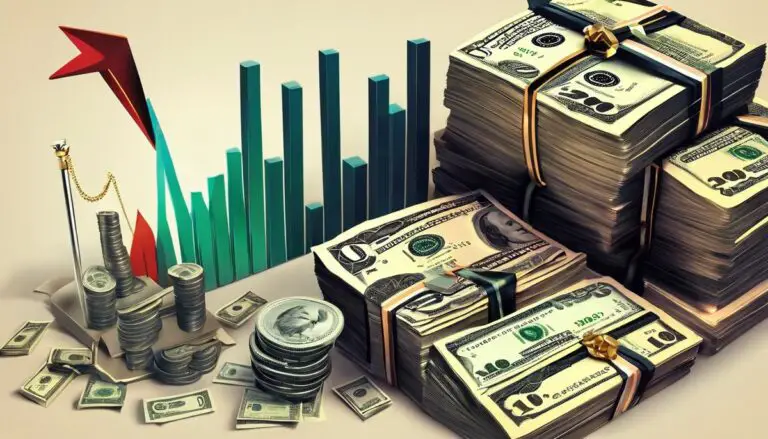Exploring the world of stock options can be equivalent to unlocking a treasure chest of financial opportunities and strategies. At its core, a stock option is a contract offering an investor the right to buy or sell shares of an underlying equity at a predetermined price before a certain date. Options come in two primary forms: call options, with the power to purchase, and put options, bestowing the right to sell. While these instruments can act as a hedge against market volatility, they also offer avenues for speculation and leveraging positions, thus attracting a diverse array of investors. As we embark on this journey through the mechanics of stock options, we’ll navigate through the nuances of how they’re valued, the various strategies they enable, and their unique role in employee compensation, all while considering the essential legal and regulatory frameworks that govern their use.
Basics of Stock Options
Title:
Navigating the Dynamic World of Stock Options: A Guide for Forward-Thinking Investors
In the high-stakes game of investment, stock options represent a potent tool that savvy entrepreneurs and investors wield to capitalize on market opportunities. Understanding the mechanics and strategic applications of stock options is not just smart—it’s an absolute necessity for those looking to elevate their portfolio management game.
Stock options are essentially contracts that grant individuals the right, but not the obligation, to buy or sell a stock at a predetermined price—known as the strike price—before a specified expiration date. There are two primary types of stock options: call options, which give the holder the right to purchase a stock at the strike price; and put options, granting the right to sell at the strike price.
The intrinsic value of a stock option is tied to its strike price in relation to the current market value of the underlying stock. A call option has value if the stock trades above the strike price, while a put option has value when the stock trades below it. This is central to a strategic investor’s playbook, as selecting the right type of option and strike price is pivotal in maneuvering through the market’s ups and downs.
From the viewpoint of an employee, stock options can be a golden ticket—a component of a compensation package with potential for significant upside. For a startup or growth-phase company, offering stock options allows them to attract top-tier talent by aligning the interests of the employees with the success of the company.
Deploying stock options effectively necessitates a keen understanding of leverage. They operate using a multiplier effect – controlling a large amount of stock with relatively little capital. This leverage can amplify potential gains if the market swings favorably; conversely, it can also magnify losses when the tide turns.
Traders must be cognizant of the time decay aspect of options—the fact that their value erodes as the expiration date nears. Time decay accelerates as the option approaches expiration, making timing a critical factor for traders to consider.
The liquidity of options is another important consideration. Highly traded options have narrower bid-ask spreads, which means lower transaction costs and a faster ability to enter or exit positions as market conditions fluctuate.
In an ever-evolving financial landscape, harnessing stock options is a matter of leveraging strategic insight with tactical precision. Employed judiciously, they can serve as a vehicle for risk management, hedging against potential downturns or speculating on upward trends without the heft of full equity investment.
In integrating stock options into a diversified investment portfolio, forward-thinking entrepreneurs recognize the pivotal role they play. Whether seeking to incentivize a workforce or strategically position assets in volatile markets, options offer a sophisticated versatility that can be masterfully tailored to meet specific financial objectives.
As with any investment vehicle, due diligence and a thorough grasp of potential risks and rewards are indispensable. Engaging with stock options opens a world of possibility, a veritable chessboard where the astute investor can make moves with confidence, backed by a rich understanding of the rules and the dexterity to pivot as the game unfolds.

Valuation and Pricing of Options
Now, let's dive further into the art of appraising stock options. Beyond the basics, smart investors and savvy business professionals look for the intricacies that determine an option's true value. One central concept to grasp here is the concept of intrinsic and extrinsic value.
Intrinsic value is simple: it's the difference between the stock's current market price and the option's strike price, for options that are in-the-money. For call options, if the stock trades above the strike price, the difference is the intrinsic value. Conversely, for put options, it's when the stock is below the strike price. Extrinsic value, however, is where the valuation becomes nuanced and determined by other dynamic factors.
Volatility of the underlying stock is a critical component – the more a stock’s price swings, the higher the potential for profit and, thus, the greater the option’s extrinsic value. This is often quantified through the use of sophisticated models such as the Black-Scholes model or the binomial model, each incorporating the asset's volatility to yield a theoretical value.
Another piece of the puzzle is interest rates. Those plugged into the financial zeitgeist will know that changes in interest rates can affect options pricing, particularly on long-term options. Higher interest rates typically increase the value of call options and decrease the value of put options, as the cost of carrying assets changes.
Now, consider the options Greeks - Delta, Gamma, Theta, Vega, and Rho. These risk measures are akin to a changeable blueprint for how an option's price might move in respect to different market variables. Take Vega, for example, which measures sensitivity to volatility. In a market that's roller-coasting, an option with a high Vega can be a treasure trove for an adept investor.
It’s paramount for businesses and investors alike to perceive stock options not as lottery tickets, but as strategic instruments that, if correctly valued and deployed, can amplify gains, protect assets, and fuel growth. The seasoned entrepreneur or executive knows that comprehension of the theoretical and market value of stock options will refine the decision-making process in both acquisitions and granting of options.
In practice, remember that the market’s opinion is the ultimate arbitrator of value. Open market transactions reflect real-world sentiments and expectations. The quoted prices for options are thus the sum total of public information, sentiment, and speculation about the future. This is where a professional network brimming with market analysts and trendsetters becomes an invaluable resource for predicting market mood swings.
Ultimately, the valuation of stock options resides at the crossroads of objective financial models and subjective market perceptions. This duality makes the options landscape a thrilling environment for the shrewd innovator who combines analytical prowess with market intuition. Be that innovator. Decode the metrics, tap into the trends, pivot with the pulses of the market, and orchestrate the harmonious integration of stock options into the symphony of investment strategy. Now, go forth and conquer the options market with precision and savvy.

Stock Options Strategies
Leveraging Strategic Flexibility: The Power of Synthetic Positions
In the fast-paced world of investment, savvy individuals understand that stock options offer strategic flexibility unattainable through mere stock purchases. Synthetic positions stand out as a compelling tactic for investors aiming to replicate payoffs of actual stock holdings without the full capital outlay. These positions cleverly combine call and put options to mimic long or short stock exposures, illustrating the breadth of ingenuity available within options trading.
Utilizing Spreads to Control Capital Exposure
Beyond directional bets and simple hedging, spread strategies empower investors with precision control over their risk and reward profiles. By purchasing one option and selling another, investors carve out profit zones while defining their maximum risk. This twofold approach, using vertical, calendar, and diagonal spreads, is not just a reflection of risk tolerance; it’s a commitment to cap potential losses while targeting specific market behaviors.
Capitalizing on Earnings and Events with Straddles and Strangles
Market events, such as earnings releases or economic announcements, fuel volatility – a key component enhancing the extrinsic value of options. Astute investors capitalize on this volatility through straddles and strangles, playing the uncertainty card, often indifferent to the direction of the market move. When markets oscillate wildly, these strategies can turn the tide in the favor of the well-prepared investor, coupling market acumen with the strategic use of stock options.
The Art of Adjusting and Rolling Positions
The road to maximizing gains and minimizing losses is paved with adaptability. Options provide a significant advantage – the ability to adjust. Reevaluation and realignment of option positions in response to market movement is a hallmark of the adept investor, showcasing an understanding that the market rewards flexibility and punishes rigidity.
Harnessing the Power of Options in Buyouts and Acquisitions
In scenarios of potential buyouts and acquisitions, options serve as both predictors and beneficiaries of outcomes. The heightened activity and interest prompt unforeseen opportunities for the options market, with the potential for outsized gains for those who strategically position themselves ahead of the curve.
Conclusion:
The strategic plays accessible to those who master the intricacies of stock options transcend the mundane buy-and-hold strategy. The arsenal available includes synthetic positions, spreads, volatility bets, along with dynamic adjustments and speculative positioning in face of market-shaping events. This environment is not for the faint of heart; it demands audacity, calculated risks, and an unwavering commitment to innovation. The investor who embraces this approach—blending keen analysis, market insight, and strategic foresight—sits at the vanguard of the investment world, continually unlocking the potential of markets in flux. The key to wielding this power lies in the ability to anticipate, adapt, and apply the myriad of strategies that stock options present. And remember, in the relentless pursuit of financial acumen, options are not just tools; they are the building blocks of the sophisticated investor’s empire.

Employee Stock Options (ESOs)
Employee Stock Options (ESOs) have emerged as a compelling resource for companies aiming to secure top talent while aligning the workforce’s aspirations with shareholder interests. ESOs act as an extension of company culture, offering employees a literal share in the future they help to build.
Unlocking Employee Motivation and Retention
In the competitive arena for elite professionals, ESOs serve as a powerful motivator. When employees are vested in the success of their enterprise via stock options, their engagement and productivity levels often surge. There’s a palpable shift in mindset: employees transition from mere workforce to part-owners, stewards of the corporate vision. This ‘ownership effect’ reduces turnover rates, embedding institutional knowledge and fostering a unified drive towards corporate success.
Leveraging Talent Acquisition
For startups and mature companies alike, ESOs are a deal clincher in recruiting. When salary offerings reach an impasse, stock options can tip the scales. They’re the ace in the hole, providing prospective employees with a chance to participate in the company’s potential windfalls without upfront costs. This is especially strategic when luring industry mavericks who might bring considerable expertise and innovative zest to a company’s operations.
Aligning Interests: Synchronization of Goals
ESOs are a lynchpin in aligning employee interests with those of shareholders. With skin in the game, team members are acutely invested in effective decision-making and strategic risk-taking. This alignment transforms objectives from individual to collective endeavors, leading to higher operational efficiency and market responsiveness.
Innovation-Friendly Atmospheres
Stock options engender an environment ripe for innovation. Employees vested in the future of their enterprise are more inclined to seek and support disruptive strategies and products. This paradigm not only aides companies in navigating the waters of change but also sets a tone that attracts individuals who are at the vanguard of their fields – those who aren’t just in the game for a paycheck but are genuine change agents.
Financial Flexibility for Companies
Issuing stock options provides financial leeway for emergent entities and cash-conscious firms. Rather than allocating valuable capital to large salaries, options allow companies to preserve cash for operational and developmental needs. ESOs are a testament to a company’s confidence in its future worth, creating a secondary form of currency used to compensate and cultivate the leaders within its ranks.
Tax Incentives
From a tax perspective, stock options offer benefits over immediate financial compensation. Companies can delay cash payment without skimping on overall remuneration packages. Meanwhile, employees may benefit from capital gains treatment, depending on the type of options granted and compliance with specific tax code requirements.
Forward-Thinking Cultures
Ultimately, ESOs are emblematic of forward-thinking corporate cultures that prioritize long-term value creation over short-term gains. They foster a workplace filled with individuals who are not just employees or even team members but co-pilots in the corporate endeavor. This shift towards future-centric thinking is a strategic reinforcement of the adage: take care of your employees, and they, in turn, will take care of your business.
In summation, Employee Stock Options stand as a transformative force, for talent and for enterprises alike. Far beyond a mere benefit, they are a game-changer in cultivating dedicated, innovative, and aligned teams, ensuring that businesses not only attract but also retain the caliber of professionals primed to thrive in today’s dynamic market landscapes.

Legal and Regulatory Considerations
Title: Navigating the Complexities of Stock Options: Legal and Tax Perspectives
Stock options trading isn’t just about the thrill of the market or strategic acumen; it’s also about understanding the foundations of legal and tax implications that could affect bottom-line results. Any keen investor must scrutinize the legal framework and the IRS guidelines that govern stock options to optimize outcomes.
When an individual exercises stock options, they are transacting a purchase or sale of shares that can trigger significant tax events. Options are typically subject to complex tax rules, and it is paramount to distinguish between non-qualified stock options (NSOs) and incentive stock options (ISOs) as each carries different tax consequences.
For NSOs, the difference between the exercise price and the fair market value at the time of exercise is taxed as ordinary income. This event is even reportable when the shares are not yet sold, creating a tax liability upfront. For ISOs, the preferable tax treatment allows deferral of taxes until the acquired stock is sold. Provided certain holding period conditions are met, the profit may be taxed at long-term capital gains rates. Savvy investors often align their exercises and sales with the tax year map to leverage this benefit to its full potential.
Regarding the legal landscape, the Securities and Exchange Commission (SEC) oversees options trading through regulations that protect investors and maintain fair markets. Investors are required to familiarize themselves with rules regarding disclosures, insider trading, and the specifics of trading on margin, as these can lead to legal complications if not accurately adhered to.
Furthermore, the Alternative Minimum Tax (AMT) can blindside those unacquainted with its tentacles. It’s designed to ensure that high-income earners pay a minimal level of tax, but it can ensnare option holders who exercise ISOs and do not sell in the same year. This rule can inflate taxable income and therefore the tax bill, making it crucial to calculate AMT implications as a part of the options strategy.
Conversely, savvy entrepreneurs recognize that stock options can be leveraged as a tool for corporate tax planning. Offering stock options as part of compensation packages can align employee performance with the company’s financial goals, potentially leading to an optimized tax situation by deferring some compensation to capital gains and also offering deduction possibilities for the corporation when the employees exercise their options.
Anchoring this financial instrument in a solid understanding of the legal and tax frameworks will not only fortify the position of individual traders and corporate talent managers but also lay the groundwork for a robust and transparent financial strategy that upholds the integrity of both the markets and the law.
As we stand today at the crossroads of innovation, embracing the shifting trends in tax law and leveraging legal foresight can turn the complex nature of stock options into a competitive advantage for both individuals and enterprises. Engaging with a knowledgeable tax advisor and keeping a vigilant eye on legislative changes is less of a choice and more of a necessity for those looking to capitalize on the dynamic realm of options trading.
Navigating through the labyrinth of stock options trading, while complex, can be a rewarding venture when augmented with the insights of tax implications and legal mandates. After all, in the grand chessboard of financial markets, informed compliance and strategic tax positioning are the moves that distinguish a master strategist from the rest of the players.

The intricate tapestry of stock options trading weaves together strategic thinking, market forecasting, and financial acumen. By delving into the various strategies, from protective puts to complex spreads, investors can tailor their approach to suit their individual objectives, whether that’s capitalizing on market swings or cushioning against potential downturns. Employee stock options further underscore the intersection of workforce motivation and shareholder interests, reinforcing the symbiotic relationship between a company’s success and its employees’ rewards. While stock options can open doors to potential wealth, comprehending the legal and tax implications remains pivotal for both compliance and maximization of benefits. This dynamic arena of investment offers not just a wealth of opportunity, but a continuous learning curve for the astute investor.



